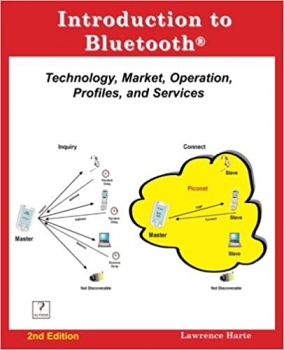This book explains provides a simplified description of Bluetooth technology, services, and profiles. You will find out how Bluetooth devices automatically locate nearby Bluetooth devices, authenticate them, discover their capabilities, and the processes that are used to setup connections with them. Discover how Bluetooth’s spread spectrum technology allows it to operate with other devices operate including wireless LAN, microwave ovens, cordless telephones, wireless video cameras and how the Bluetooth specification now allows devices to adapt their frequency transmission to avoid interfering with these devices. You will learn about the discovery (inquiry) phase and the connection (paging) process that devices use to find and connect to other devices. The modulation types and packet structures are explained along with how the use of multislot RF packets can dramatically increase the data throughput between devices. Learn how enhanced data rate (EDR) can increase data transmission rate from 1 Mbps to 3 Mbps. The protocol layers are explained including the RF baseband (physical), link manager, L2CAP (transport), and upper session and application layers. You will learn about the many Bluetooth profiles that define the services and applications that Bluetooth can provide. Bluetooth security processes such as pairing (authentication) and privacy (encryption) and how the new simple pairing process is described. Discover that Bluetooth has evolved and continues to evolve from basic 1 Mbps Piconet services to the proposed Bluetooth 480 Mbps UWB services. Some of the most important topics featured in this book are: • Bluetooth Piconets • Data Rates and Link Types • Device Discover and Connection • Bluetooth Marketplace • Profiles and Why they are Important • Enhanced Data Rate • Interference Avoidance • Improved Security and Simple Pairing • Rapid Signal Acquisition • Bluetooth Evolution
































ارسال نظر درباره کتاب Introduction to Bluetooth: Technology, Operation, Profiles, and Services